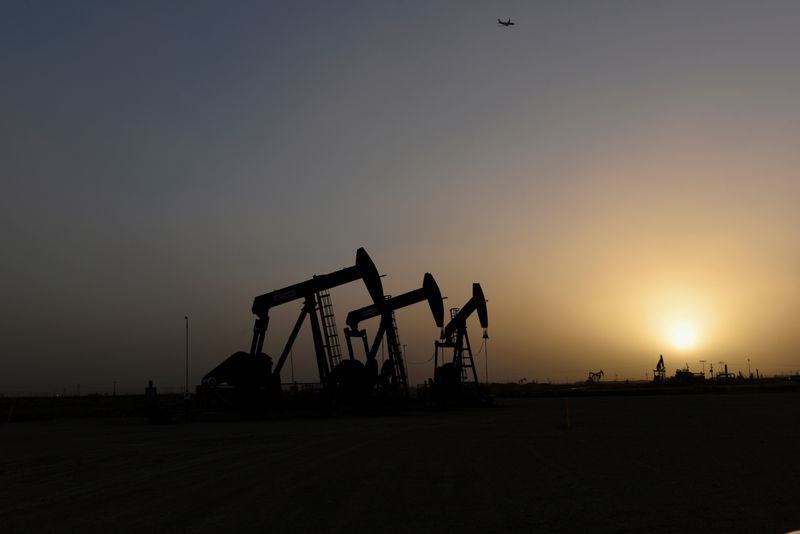By Seng Li Peng and Florence Tan
SINGAPORE (Reuters) - Brent crude futures jumped nearly $3 on Friday after a U.S. air strike in Baghdad killed top Iranian and Iraqi military commanders, sparking concerns of disruption to Middle East oil supplies.
Brent crude futures (LCOc1) hit an intraday high of $69.16 a barrel, their highest since Sept. 17, before easing to $68.42, up $2.17 or 3.28% by 0806 GMT.
West Texas Intermediate (WTI) crude futures (CLc1) were up $1.85 or 3.04% at $63.03 a barrel, having earlier spiked to $63.84 a barrel, their highest since May 1.
"The supply side risks remain elevated in the Middle East and we could see tensions continue to elevate between the U.S. and Iran-backed militia in Iraq," said Edward Moya, analyst at brokerage OANDA, in an e-mail to Reuters.
An air strike at the Baghdad International Airport early on Friday killed Iranian Major-General Qassem Soleimani, head of the Quds Force, and Iraqi militia commander Abu Mahdi al-Muhandis, an Iraqi militia spokesman said.
The killings marked an escalation in the regional "shadow war" between Iran and the United States and sparked Iranian calls for revenge and preparation for further conflict in Iraq.
"There is an ever present risk that Iraq would be the theater where the struggle between the U.S. and Iran would play out," Helima Croft, RBC Capital Markets' global head of commodity strategy said in a note.
Iraq, the second largest producer among the Organization of the Petroleum Exporting Countries (OPEC), exports about 3.4 million barrels per day of crude.
In Europe, Belarus on Friday also said Russia had halted oil supplies to its refineries.
Oil prices were also lifted by China's central bank saying on Wednesday it was cutting the amount of cash that banks must hold in reserve, releasing around 800 billion yuan ($115 billion) in funds to shore up the slowing economy.
This came shortly after data showed China's production continued to grow at a solid pace and business confidence shot up.

"Oil prices still have room for further upside as many analysts are still having to upgrade their demand forecasts to include a rather calm period on the trade front," Moya said, referring to signs of a thaw in trade relations between China and the United States.